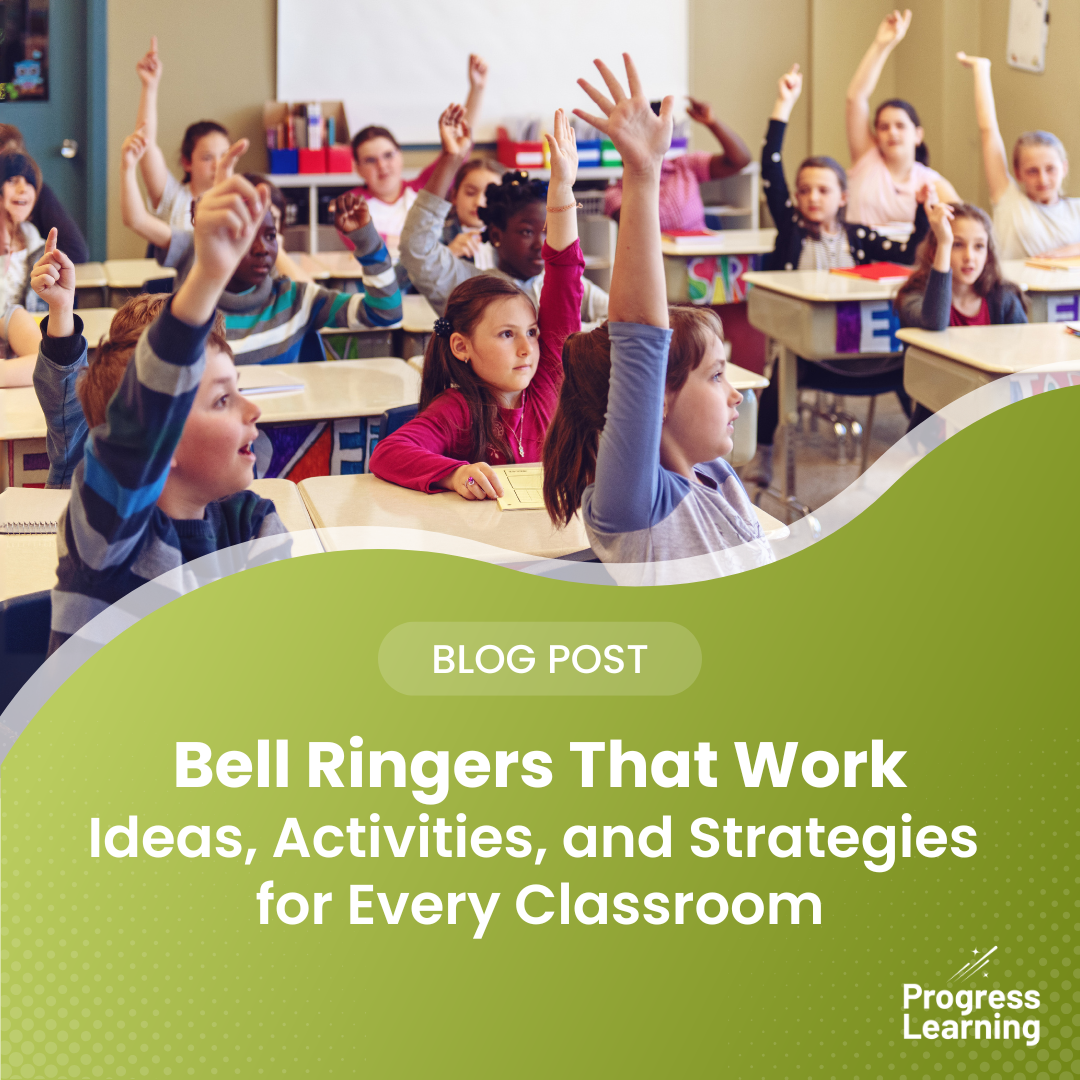Back to School Tips for Teachers: Advice for Teachers, by Teachers
There’s something uniquely energizing, and admittedly nerve-wracking, about the start of a new school year. Whether you’re stepping into your very first classroom or returning for another exciting year, you probably feel a mix of anticipation, enthusiasm, and maybe even a bit of overwhelm. But if you’re feeling all of this right now, know you’re definitely not alone.
At Progress Learning, many of us are former educators who vividly remember the late-night classroom setups, carefully prepared lesson plans (and those inevitable moments when things didn’t quite go according to plan!), and navigating those first-day jitters right alongside our students. We’ve learned a lot along the way, and we’d love to pass those lessons on to you to help you start this year with confidence, preparation, and genuine excitement.
Specific Tips for Different Grade Levels
Elementary School: Building Warmth and Predictability
Young students arrive eager, curious, and ready to learn, but they depend on routines and a sense of community to truly thrive. Elizabeth Buchanan, Account Executive and former elementary teacher, recommends always beginning the day with a morning meeting, describing it as “great for checking in, giving students a chance to talk, and for setting the tone and expectations for the day.”
Beyond morning meetings, clearly teach routines such as lining up, transitioning between activities, and classroom clean-up. Using visual schedules and consistent cues like gentle bells or familiar songs creates a calm, predictable, and joyful learning environment.
Middle School: Making Genuine Connections
Middle school students might not always openly express it, but they’re looking for teachers who genuinely care. Mackenzie Maddox, Manager of Customer Success and former teacher, believes that “building relationships with students is key to a successful year.” She found that taking interest in students’ lives outside of school, like attending their little league games or extracurricular events, made an enormous difference in terms of building trust and helping students feel valued. “Just show that you care.”
Alongside these connections, embrace structured flexibility. Clearly define classroom routines but remain open to adapting your approach to meet your students’ evolving needs.
High School: Treating Students as Partners
High school students respond best when they’re treated with respect and given ownership over their learning environment. When setting class rules, Mackenzie Maddox advises that “creating class rules collaboratively with students can foster a stronger sense of ownership and responsibility.” Allowing students to participate in decision-making not only empowers them but encourages active engagement and accountability.
Consider incorporating student choice into assignments, setting goals together, and using real-world examples to make learning more relevant and engaging.
Advice for Brand-New Teachers vs. Returning Teachers
For Brand-New Teachers: You Don’t Have to Do This Alone
Your first teaching year is uniquely challenging, but incredibly rewarding. Kim Reiter, Senior Academic Manager and former educator with 19 years of teaching experience, reminds new teachers to “find a teacher friend with whom you can share thoughts and ideas.” Leaning on colleagues, asking questions, and building a support network is crucial to your well-being.
It’s also essential for new teachers to remain adaptable. Brett Kushner, Enterprise Customer Success Manager and former principal, emphasizes, “Flexibility is key. Be okay with change. Most times, things won’t go exactly how you wanted them to but that’s okay. You will continue to improve.” Stay open to adjusting your plans and embrace the learning process alongside your students.
For Returning Teachers: Keep Growing, Stay Balanced
As poet William Butler Yeats famously wrote, “Education is not the filling of a pail, but the lighting of a fire.” Returning teachers have valuable experience, yet each year presents fresh opportunities to grow and inspire. Consider exploring new instructional methods through workshops, professional development sessions, or by joining teacher communities. Trying new approaches can reignite your passion, spark student curiosity, and make teaching more joyful.
Rheanne Renzenbrink, Content Marketing Specialist and former secondary teacher, admits that while “it’s tempting to work around the clock, burnout is real. Prioritize your health and personal time – you can’t pour from an empty cup!” Maintaining balance ensures you stay energized and inspired throughout the year.
Additional Quick Tips for a Successful School Year:
- Set Up Your Classroom with Purpose: Make your classroom inviting, structured, and thoughtfully organized to create a welcoming environment from day one.
- Quickly Learn Students’ Names and Interests: Use name tags, seating charts, or interest surveys to build personal connections early on, fostering mutual respect.
- Explicitly Model Expectations: Clearly demonstrate classroom routines and expected behaviors, consistently reinforcing them to establish clear norms.
- Communicate Early and Often: Set up proactive communication channels with families to build supportive relationships and handle concerns effectively.
- Create Emergency Sub Plans Early: Prepare backup lessons and organize a ready-to-go “sub tub” to reduce stress around unexpected absences.
- Celebrate Small Wins: Regularly recognize both student achievements and your own milestones, keeping motivation and morale high throughout the year.
No matter where you are in your teaching journey, your passion, dedication, and willingness to grow are already setting you up for a successful year. Yes, there will be challenges, but every day offers opportunities to make a meaningful impact on your students.
From all of us at Progress Learning, we wish you a joyful, inspired, and fulfilling school year. You’ve got this!
For more tips for teachers from our education experts at Progress Learning, subscribe below.


